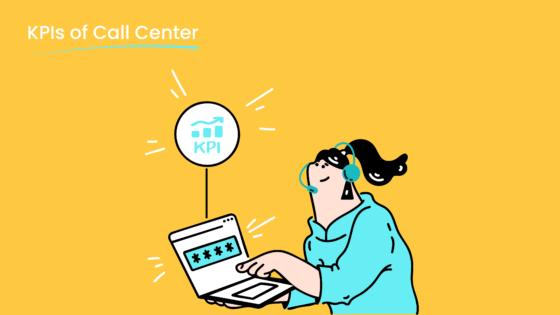Effective Ways to Enhance Client Service Management

Effective client service management plays a pivotal role in driving business success. Studies show that customer-centric companies are 60% more profitable, and loyal customers can be worth up to ten times their initial purchase. These numbers highlight how prioritizing client satisfaction directly impacts your bottom line.
Adopting innovative tools and strategies enhances client loyalty and retention. For instance, businesses that improve customer retention by just 5% see profits rise by 25% to 95%. Leveraging advanced solutions like Sobot’s omnichannel platform can streamline client interactions and deliver personalized experiences. This approach not only boosts satisfaction but also fosters long-term relationships with your customers.
Key Skills for Effective Client Service Management
Mastering Communication and Active Listening
Strong communication and active listening form the foundation of effective client management. When you communicate clearly, you reduce misunderstandings and build trust with your clients. Active listening, on the other hand, ensures that your clients feel valued and understood. This combination strengthens client relationships and fosters loyalty.
Consider the following data that highlights the impact of communication on client satisfaction:
| Aspect of Communication | Impact on Customer Satisfaction |
|---|---|
| Clarity of Information | Reduces confusion and builds trust (Marques et al., 2018; Shahbaz et al., 2020) |
| Active Listening | Enhances customer satisfaction by making customers feel heard (Nash et al., 2019; Sethi, 2016) |
| Empathy | Creates a positive emotional connection, impacting overall service quality (Nash et al., 2019) |
To master these skills, focus on speaking with precision and listening without interruptions. Use tools like Sobot’s omnichannel solution to centralize communication channels, ensuring you never miss critical client feedback. This approach helps you align with client expectations and deliver exceptional service.
Developing Problem-Solving and Conflict Resolution Skills
Problem-solving and conflict resolution are essential for navigating challenges in client management. Clients often approach you with unique issues, and your ability to address these effectively can make or break their experience. By resolving conflicts quickly, you demonstrate reliability and professionalism, which strengthens client collaboration.
To enhance these skills, start by identifying the root cause of the problem. Break it down into manageable parts and explore potential solutions. For conflicts, maintain a calm demeanor and focus on finding common ground. Regularly reviewing service records and quality assurance audits can provide insights into recurring issues, helping you refine your approach.
For example, Samsung leveraged Sobot’s all-in-one contact center solution to unify communication channels and resolve client concerns more efficiently. This strategy led to a 30% increase in agent efficiency and a 97% customer satisfaction rate. By adopting similar tools, you can streamline your processes and exceed client expectations.
Enhancing Time Management and Prioritization
Time management and prioritization are critical for effective client management. When you manage your time well, you can address client needs promptly and avoid delays that may harm client relationships. Prioritizing tasks ensures that urgent issues receive immediate attention, while less critical matters are handled systematically.
To improve these skills, use performance metrics like response times and service levels to evaluate your efficiency. Tools like Sobot’s unified workspace can help you organize tasks and manage workloads effectively. This platform consolidates client information, enabling you to prioritize inquiries based on urgency and importance.
For instance, automating repetitive tasks with AI-driven solutions allows you to focus on high-value interactions. This not only enhances productivity but also ensures that clients receive timely and personalized service. By mastering time management, you can meet client expectations consistently and build lasting trust.
Optimizing Client Touchpoints for Better Engagement

Mapping the Client Journey
Understanding the client journey is essential for effective client management. By mapping out each stage of interaction, you can identify opportunities to enhance engagement and meet client expectations. Start by analyzing how clients discover your business, interact with your services, and make purchasing decisions. This process helps you pinpoint areas where improvements can create a seamless experience.
Research highlights the importance of data-driven strategies in optimizing touchpoints. For example:
| Source | Key Findings |
|---|---|
| Zigpoll | Data-driven strategies improve engagement in campaigns across industries. |
| Vision Edge Marketing | Shifting from monologue to dialogue enhances touchpoint effectiveness. |
By leveraging tools like Sobot’s omnichannel solution, you can consolidate data from multiple channels. This allows you to track client interactions and refine your approach at every stage of the journey.
Streamlining Digital and Physical Touchpoints
Streamlining touchpoints ensures consistency and efficiency in client interactions. Physical touchpoints, such as in-store experiences or product packaging, build trust and reinforce brand value. Tangible cues create environments that resonate with clients, leaving a lasting impression.
On the digital side, a well-defined strategy enhances engagement across platforms like email, social media, and live chat. Seamless and personalized interactions at these touchpoints improve satisfaction and loyalty. Digital transformation also plays a key role in optimizing processes and enhancing the overall experience.
For example:
- Physical touchpoints establish trust and improve brand perception.
- Digital strategies deliver efficient, personalized interactions across channels.
- Understanding the client journey is crucial for effective digitization.
Sobot’s unified workspace simplifies this process by integrating digital and physical touchpoints. It provides a centralized platform for managing interactions, ensuring a cohesive experience for your clients.
Personalizing Client Experiences with Tools like Sobot's Omnichannel Solution
Personalization is a powerful way to exceed client expectations. Tailoring experiences to individual preferences fosters stronger connections and boosts satisfaction. With Sobot’s omnichannel solution, you can access a unified view of client data, enabling you to deliver customized interactions across all channels.
For instance, Samsung used Sobot’s platform to unify communication channels and provide personalized support. This approach led to a 97% customer satisfaction rate and a 30% increase in agent efficiency. By adopting similar tools, you can enhance client management and build lasting relationships.
Enhancing Client Interactions with Technology

Building Stronger Connections Through Empathy
Empathy is a cornerstone of effective client management. When you show genuine understanding and care, you build trust and strengthen client relationships. Empathy fosters a supportive environment where clients feel valued and understood. Studies reveal that empathy enhances trust and intimacy, creating stronger social bonds, especially during emotional exchanges. It also encourages open communication, allowing clients to share their concerns freely.
To integrate empathy into your client interactions, focus on active listening and emotional awareness. For example, when a client expresses frustration, acknowledge their feelings before offering solutions. This approach not only resolves issues but also deepens the connection. Tools like Sobot’s omnichannel solution can help you track client interactions across channels, enabling you to respond with empathy and context. By prioritizing empathy, you can cultivate client trust and loyalty, ensuring long-term success in client management.
Implementing Proactive Support Practices
Proactive support transforms client service management by addressing issues before they arise. This approach not only reduces client frustrations but also enhances satisfaction and loyalty. Research shows that proactive customer service can increase a customer’s value enhancement score by 9%. Companies like Copa Airlines reduced their support agents’ case volume by 40% through proactive initiatives, while Anglian Water achieved significant cost savings in their call centers.
You can implement proactive practices by anticipating client needs and offering solutions in advance. For instance, sending reminders about upcoming renewals or providing self-help resources for common issues can save clients time and effort. Sobot’s AI-powered tools, such as chatbots and voicebots, enable you to automate these processes. These tools deflect repetitive inquiries, allowing your team to focus on complex cases. By adopting proactive support, you can create exceptional client experiences that drive loyalty and growth.
Leveraging Sobot's Voice/Call Center for Seamless Interactions

Modern technology plays a vital role in delivering seamless client interactions. Cloud-based contact center solutions, like Sobot’s Voice/Call Center, enhance flexibility, scalability, and cost-effectiveness. These platforms serve as crucial touchpoints for cultivating client loyalty and driving revenue growth. Sobot’s Voice/Call Center offers features like AI-powered voicebots, which improve query resolution rates by 20%, and omnichannel support, ensuring a consistent experience across platforms.
For example, 75% of customers use multiple channels to interact with businesses. Sobot’s unified workspace consolidates these interactions, enabling agents to provide personalized and efficient service. Additionally, AI-driven coaching programs improve agent performance by up to 25%, ensuring high-quality support. By leveraging Sobot’s Voice/Call Center, you can optimize workflows, reduce operational costs by 20% to 30%, and enhance client satisfaction. This technology empowers you to deliver seamless and effective client management.
Developing a Comprehensive Client Service Strategy
Aligning Service Goals with Business Objectives
Aligning your service goals with business objectives ensures that every client interaction contributes to your organization's success. This alignment creates a unified direction, where all departments work cohesively toward shared goals. For example, integrating service strategies with managed service provider (MSP) contracts maximizes value and performance.
| Key Points | Description |
|---|---|
| Importance of Alignment | Ensures contracts with MSPs maximize value and performance. |
| Methodologies | Provides structured approaches to achieve strategic alignment. |
| Benefits | Enhances organizational performance and decision-making. |
When your service goals align with business objectives, you consolidate resources around initiatives that create maximum value. This approach fosters collaboration across departments, breaking down silos and improving coordination. By integrating tools like Sobot’s omnichannel solution, you can streamline processes and ensure your client service management aligns with broader business goals.
Establishing Clear Policies and Procedures
Clear policies and procedures provide a roadmap for delivering consistent and high-quality service. They set expectations for your team and clients, reducing ambiguity and ensuring smooth operations. Research in healthcare demonstrates that clear policies, especially those involving client engagement, significantly improve service outcomes. Active engagement leads to better experiences and higher satisfaction levels.
To establish effective policies, focus on creating guidelines that address common client scenarios. For instance, define protocols for handling complaints, managing inquiries, and escalating issues. Tools like Sobot’s unified workspace can help you implement these policies seamlessly, ensuring your team follows a standardized approach. Clear procedures not only enhance service quality but also strengthen client relationships by building trust and reliability.
Regularly Reviewing and Updating the Strategy
A successful client service strategy requires regular reviews and updates. This practice ensures your approach remains relevant and effective in a dynamic business environment. Key performance indicators (KPIs) like client retention rates, average resolution time, and Net Promoter Score (NPS) provide valuable insights into your strategy's effectiveness.
| KPI | Description |
|---|---|
| Client Retention Rates | Measures the organization's ability to retain customers over the long term, indicating service effectiveness. |
| Average Resolution Time | Indicates how quickly customer issues are resolved, correlating with customer satisfaction. |
| First Call Resolution | Percentage of queries resolved on the first contact, reflecting service efficiency. |
| Net Promoter Score | Measures overall customer satisfaction and loyalty, showing willingness to recommend services. |
Regularly analyzing these metrics helps you identify areas for improvement. For example, if your average resolution time increases, you can adjust workflows or provide additional training to your team. By staying proactive, you ensure your strategy evolves with client needs, fostering effective client management and long-term success.
Empowering Your Team for Effective Client Management
Providing Ongoing Training and Development
Continuous training equips your team with the skills needed for effective client management. It ensures they stay updated on best practices and emerging trends, which directly impacts service quality. Studies reveal that insufficient training often leads to high staff turnover, with rates reaching up to 75% in human-service organizations. This turnover not only disrupts operations but also incurs financial losses ranging from $5,000 to $10,000 per employee.
To address this, focus on providing hands-on training and interactive workshops. These methods are more effective than traditional lectures, which often fail to engage employees. For example, satisfaction with training significantly improves staff retention, reducing errors and enhancing client outcomes. Tools like Sobot’s unified workspace simplify training by offering a centralized platform for managing client interactions. This allows your team to practice real-world scenarios, improving their confidence and efficiency.
Fostering a Culture of Accountability and Ownership
A culture of accountability transforms your team into proactive problem-solvers. When employees take ownership of their actions, they align their efforts with organizational goals, driving performance. For instance, a leading bank empowered frontline agents to resolve issues directly, resulting in a 20% increase in first-contact resolution rates.
Accountability also reduces inefficiencies and fosters collaboration. It creates a workplace where everyone feels responsible for delivering results. This mindset encourages trust and teamwork, which are essential for high-quality client management. You can cultivate this culture by setting clear expectations and recognizing individual contributions. Sobot’s omnichannel solution supports this by providing performance analytics, helping teams track their progress and stay focused on delivering exceptional service.
Equipping Teams with Tools Like Sobot's Unified Workspace
The right tools empower your team to manage client interactions effectively. Sobot’s unified workspace consolidates communication channels, client data, and task management into a single platform. This integration eliminates the need to switch between systems, saving time and reducing errors.
For example, a major telecom company allowed agents to resolve disputes without managerial approval, cutting average call handling time by 30%. Similarly, Sobot’s AI-powered features, such as chatbots and voicebots, automate repetitive tasks, enabling your team to focus on complex issues. These tools not only enhance productivity but also improve client satisfaction by ensuring timely and personalized responses. By equipping your team with advanced solutions, you set them up for success in effective client management.
Leveraging Feedback Mechanisms for Continuous Improvement
Collecting Feedback Through Surveys and Reviews
Gathering client feedback is essential for improving service quality. You can use various methods to collect insights effectively:
- Voluntary feedback through face-to-face interactions, email, or social media.
- Surveys conducted online, via telephone, or immediately after service delivery.
- Informal feedback shared verbally during client interactions.
Surveys, in particular, provide actionable insights. They allow you to gather real consumer opinions and make informed decisions. For example:
- Surveys collect empirical data for research.
- They help refine strategies based on client input.
- Brands can use survey results to improve marketing efforts.
By leveraging these methods, you can better understand client expectations and identify areas for improvement.
Analyzing Feedback to Identify Trends and Pain Points
Once you collect feedback, analyzing it helps uncover trends and pain points. Several analytic methods can assist you:
| Analytic Method | Description |
|---|---|
| Manual Analysis | Categorizes feedback manually, though it can be time-consuming. |
| Automated Tools | Uses software to streamline the analysis process. |
| AI-Powered Analysis | Quickly processes large volumes of feedback for real-time insights. |
| Natural Language Processing | Identifies sentiment and trends in client language. |
For example, AI-powered tools can analyze support tickets to detect recurring issues. Similarly, tracking website navigation patterns can reveal where clients drop off. These insights allow you to address specific challenges and improve client relationships.
Acting on Feedback to Enhance Client Service Quality
Feedback becomes valuable only when you act on it. Addressing client concerns builds loyalty and reduces churn. For instance, resolving issues raised by dissatisfied clients can improve retention rates. Feedback also highlights service gaps, helping you innovate and stay competitive.
By actively responding to feedback, you show clients that their opinions matter. This fosters trust and ensures your services align with their evolving needs. Tools like Sobot’s omnichannel solution can streamline this process, enabling you to implement changes efficiently and exceed client expectations.
Enhancing client service management requires a strategic approach. Focus on mastering communication, streamlining touchpoints, and leveraging technology like Sobot's Voice/Call Center. These strategies improve customer satisfaction and loyalty, driving measurable outcomes.
- Set specific, measurable goals to align with client expectations.
- Use metrics like Customer Satisfaction Score (CSAT) and Net Promoter Score (NPS) to track progress:
| Metric | Description |
|---|---|
| Customer Satisfaction Score (CSAT) | Measures satisfaction with a product or service, identifying improvement areas. |
| Net Promoter Score (NPS) | Gauges loyalty and likelihood of recommendations, reflecting overall satisfaction. |
| Customer Churn Rate | Highlights retention issues by tracking the percentage of customers who stop using the service. |
Take actionable steps today. Adopt tools like Sobot’s omnichannel solutions to create memorable experiences, enhance retention, and achieve your service goals.
FAQ
1. What is client service management, and why is it important?
Client service management involves handling customer interactions to ensure satisfaction and loyalty. It helps you build trust, improve retention, and drive business growth. Effective management creates positive experiences that encourage repeat business and referrals.
2. How can Sobot’s solutions improve client service management?
Sobot’s tools, like the Voice/Call Center and Omnichannel Solution, streamline communication, automate repetitive tasks, and provide personalized experiences. These features enhance efficiency, reduce costs, and improve customer satisfaction.
3. What industries benefit from Sobot’s solutions?
Sobot serves industries like retail, finance, gaming, education, and enterprise services. Companies such as Samsung, OPPO, and Michael Kors use Sobot’s tools to unify communication channels and optimize client interactions.
4. How does Sobot’s Voice/Call Center enhance client interactions?
The Voice/Call Center offers features like AI-powered voicebots, smart call routing, and global number availability. These tools improve query resolution rates, reduce handling time, and ensure seamless communication across channels.
5. Can Sobot’s solutions integrate with existing systems?
Yes, Sobot’s solutions integrate easily with CRM systems and other platforms. This ensures smooth workflows and centralized data management, helping you deliver consistent and efficient client service.
See Also
Enhancing Customer Satisfaction Through Live Chat Strategies
Effective Strategies for Managing Call Center Quality
Best Practices for Efficient Live Chat Agent Management
Improving Call Center Efficiency Through Effective Monitoring
